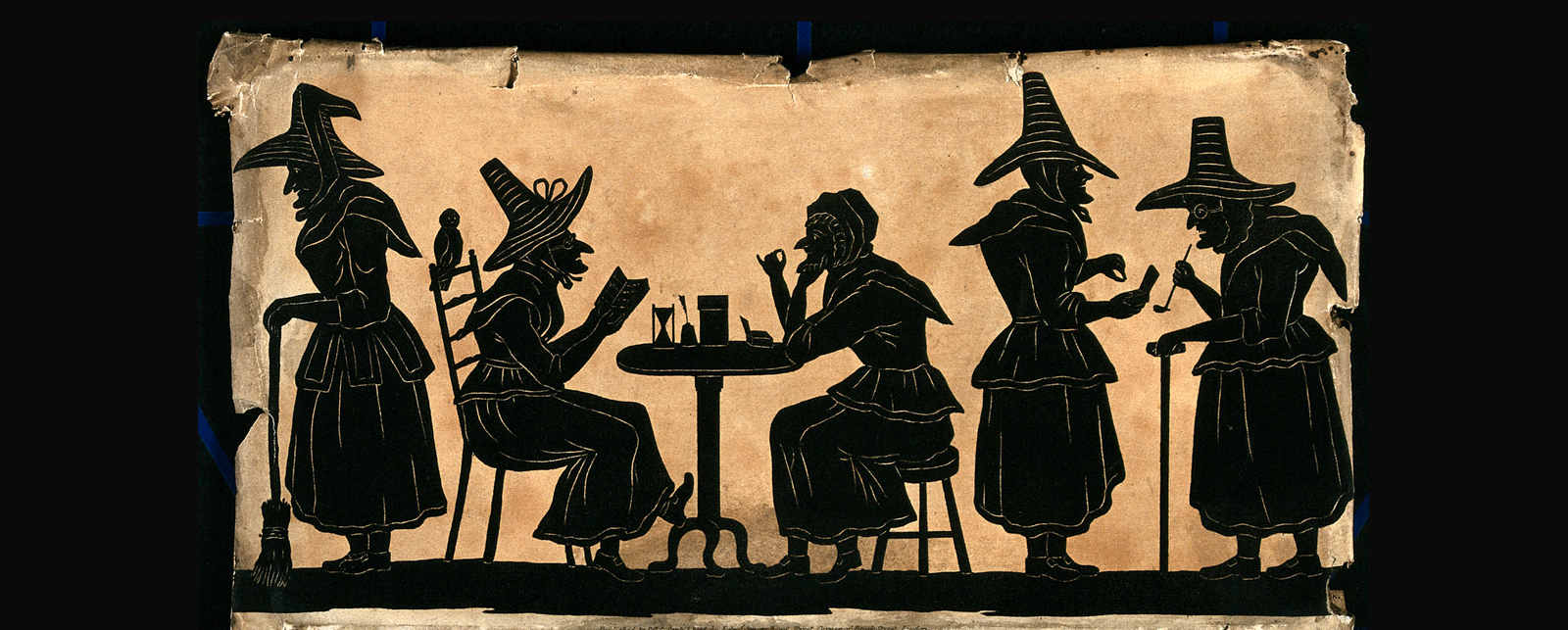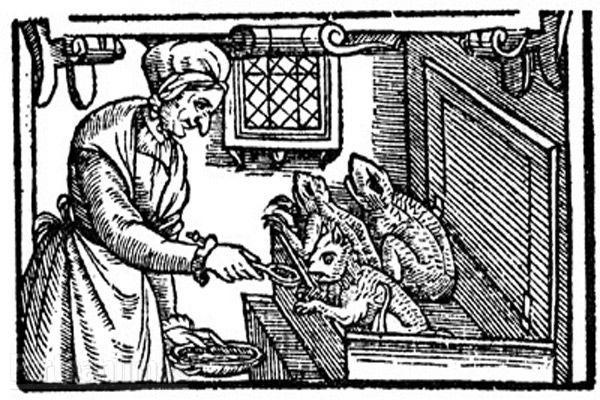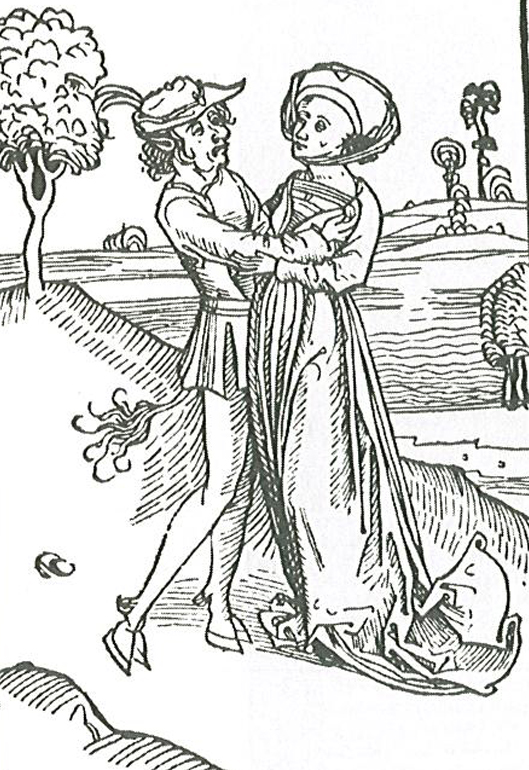
Arts & Culture
How did a cockatoo reach 13th century Sicily?

Images of witches and witchcraft offer a glimpse into the fears and superstitions of the past
Published 21 August 2015
Many an innocent child, since the release of the 1939 film The Wizard of Oz, has tromped and sung along to the munchkins’ jubilant “Ding Dong! The Witch is Dead”, as the legs of Wicked Witch of the East shrivelled under the weight of Dorothy’s house.
We have a long history of killing witches: from incitements in Exodus and Leviticus, to the torturing of a ‘little witch’ in Papua New Guinea only this year. But perhaps our most frenzied and comprehensive expression of witch killing was the Great Witch Hunt (roughly 1400-1780), a grisly, elaborate and sustained moral panic in which tens of thousands of European women and men were tortured, tried and executed.

The witch – as Europeans came to know her – was essentially invented during this period. Her image arose within an imagined counter-world to Christianity, and stood for all that was ‘unnatural’ to it – a melange of power, women, sexuality, devils and curses. She was shadow to Christian ideology, distilling its salient features.

Arts & Culture
How did a cockatoo reach 13th century Sicily?
And she has endured, riding the night sky on a broom, with her haggard face and warty nose: in our fairy tales, horror stories and even our politics. In April 2013, ‘Ding Dong! The Witch is Dead’ reached no 2 in the UK charts following Thatcher’s death, an echo of Australia’s own conflation of women, witchcraft and politics when, in 2011, Tony Abbott infamously campaigned against Julia Gillard in front of a protestor’s ‘Ditch the Witch’ placard.
The persistence and power of the image of the witch is something of which Professor Charles Zika, internationally renowned expert in witchcraft, is acutely aware.
In 1972, Charles Zika was a young postgraduate student, studying at the German University of Tübingen, when he paid a visit to the Städel museum in Frankfurt and a small panel painting caught his eye.
It would lead to a change in the direction of his own studies a decade and a half later, and to a ground-breaking approach that shed light on the phenomenon of witchcraft: the study of its history through images. Zika would in turn inspire a generation of academics who consequently took up the study of witchcraft, like Lyndal Roper, first female Regius Professor of History at Oxford.

The painting was The Weather Witches by Hans Baldung Grien (1523). Intensely coloured in orange, red, yellow and brown, it shows two beautiful, naked, powerful women against a turbulent sky. One holds a vessel sealed with an apple, containing a small demon, and she is possibly calling forth a storm. The other gazes seductively at the viewer, pulling away at a veil to reveal a secret: the women are in fact seated on a goat!
“I knew little of witchcraft, but this painting puzzled me. In a way it shocked me. They were not the witches I expected to see,” says Professor Zika.
“I asked myself, were these women really witches? And what in fact was witchcraft?”
The iconography of The Weather Witches was far richer than the diluted, standard, haggard witch we had inherited by the twentieth century. It was a roadmap to the case against witchcraft at the time: the witches were women, they were in cahoots with the devil (the goat), and they were practicing weather magic, one of a range of folk practices that started to be grouped under the rubric of witchcraft.
“Witchcraft was in fact not a singular practice or phenomenon”, says Professor Zika.
“What happened was that a whole lot of diverse practices started to be grouped together, and importantly, these became linked to the diabolical.”
These folk practices had existed for a long time in communities, and were associated with healing, magic and, sometimes, causing harm.

Arts & Culture
Why fake news is anything but new
“There was herbalism and midwifery. There was spell-making: love spells were particularly popular, with herbs and potions to concentrate or dampen desire.
“There was, as mentioned, weather magic: this was practiced using water or urine in a dish over which recitations were made. And there were water diviners, and treasure finders – who were usually male and from higher up in the social classes – who evoked spirits to search for treasure.
“On the other side, there were also those who were known for dealing curses and causing harm. And then there were the poisoners. One story tells of shepherds who understood the properties of herbs through ministering to their flocks, and applied this to the making of poisons.”
Some people were accused of witchcraft because they were seen to threaten the community’s stability in certain ways; like widows, who made up a disproportionate number of those accused.
“People tend to think of the witch-hunts as being a top-down movement,” says Professor Zika. “But in fact it was a groundswell, within mainly rural communities at first – to get rid of people they didn’t like or feared for some reason.”

Those accused of witchcraft were blamed for most things that went wrong, like a child being stillborn, people and animals becoming ill, crops failing, deaths, and wells drying up.
Bad weather was also often blamed on withes; Professor Zika explains this was a period of extremely unreliable and fierce weather, often called Europe’s ‘little ice age’, a time of cold, storms and changing weather patterns. Some researchers think this was one of the pivotal drivers of the witch craze.
There were also quite fanciful accusations; under-producing dairy cows were blamed on the practice of ‘milk stealing’, achieved by striking nearby trees with a magic axe, from which the milk would pour.
But the underlying claim in most accusations centred on connections to the devil. Witches were accused of consorting with the devil, most often in sexual acts, and of doing his bidding.
This can be seen in many of the images depicting witches meeting with the devil. Although nudity was often seen in images, sexual acts were primarily inferred rather than explicit, in stark contrast to such tracts as the enormously influential Malleus Maleficarum or the Hammer of the Witches (1487), a nightmare of witches, the devil, child sacrifice and sexual acts written by a Dominican, Heinrich Kramer.

In the rather courtly picture at right, a well-dressed witch, practicing a kind of glamour or deception, meets the devil in a tryst in the countryside, his lovely tail and cloven hoofs protruding from under his suit.
The witch, as devil’s consort, was overwhelmingly conceived as a woman. Her sexuality was emphasised, often characterised by excess and disorder, by nudity, by unkempt and wild hair. But men were included at times, too.
“It’s often believed that only women were killed in the witch hunts, but men were also accused of witchcraft,” says Professor Zika.
“This misconception is mostly due to the image we have. The witch was portrayed as a woman. Her iconography is associated with women: she is shown at a cauldron, or riding a cooking fork or later, a broom, or in the company of other women, as female conviviality is also associated with witchcraft.
“As an uncontrolled woman, she is the opposite of the Christian ideal, emblematic of a reversal of the true order of things – thus the images of the witch riding animals backwards,” says Professor Zika.
The ideal Christian woman was chaste and obedient to men. In her healings, in her work, in her curses, the witch overstepped this natural order. She was doing business, but her power could not be inherent, it had to be derived from an external source, in an overarching, unholy transaction.
Professor Zika’s latest research looks at images of the witch in the seventeenth century, towards the end of the period, as the witch-hunts increased in intensity and then ebbed, due to growing skepticism about witches’ powers and their judicial prosecution.

Arts & Culture
Music fit for an Empress: Catherine the Great’s playlist
“From 1590 on, large gatherings began to be represented in images. What this illustrates is that witches were seen to be proliferating. The settings shift from rural scenes to increasingly urban ones, representing a grave threat to all of society, including the centres of power. And so we start to see these mass gatherings, the witches’ dance or Sabbath.”
Not only was the dance frenzied and magical, it was also a marker of community power, says Professor Zika.
“If you think about the dance – who went to dances? In Nuremberg, the most powerful families went. The dance was a demonstration of community. To have the witches represented as dancing together raised the spectre of an organised, powerful community, a dangerous conspiracy.”
Professor Zika studies these images both as reflections and shapers of popular thought, a key to the cultural forces that gave rise to the historical phenomena.
“You have to remember that in this period, images are very influential. A lot of the population can’t read, and we have the advent of the printing press – mass media.
“These images were everywhere – not only in bookplates for the literate, but in broadsheets, in pamphlets handed out or sold by travellers, tinkers and preachers, and pasted on the walls of inns.
“It’s said that without print, the Reformation could not have happened, but I suspect the witchcraft phenomenon would not have happened without print either.”
Prior to Professor Zika’s work, historians were largely ignoring such images, relying on written texts in the main part, and simply using the images as illustrations. But they have proved critically important in understanding the past.
“The visual is a powerful medium. People – especially those who can’t read – communicate messages and stimulate others to action with pictures, as well as through oral and literate media.”
Banner image: Witches: five silhouetted figures. September 1815. Wikimedia